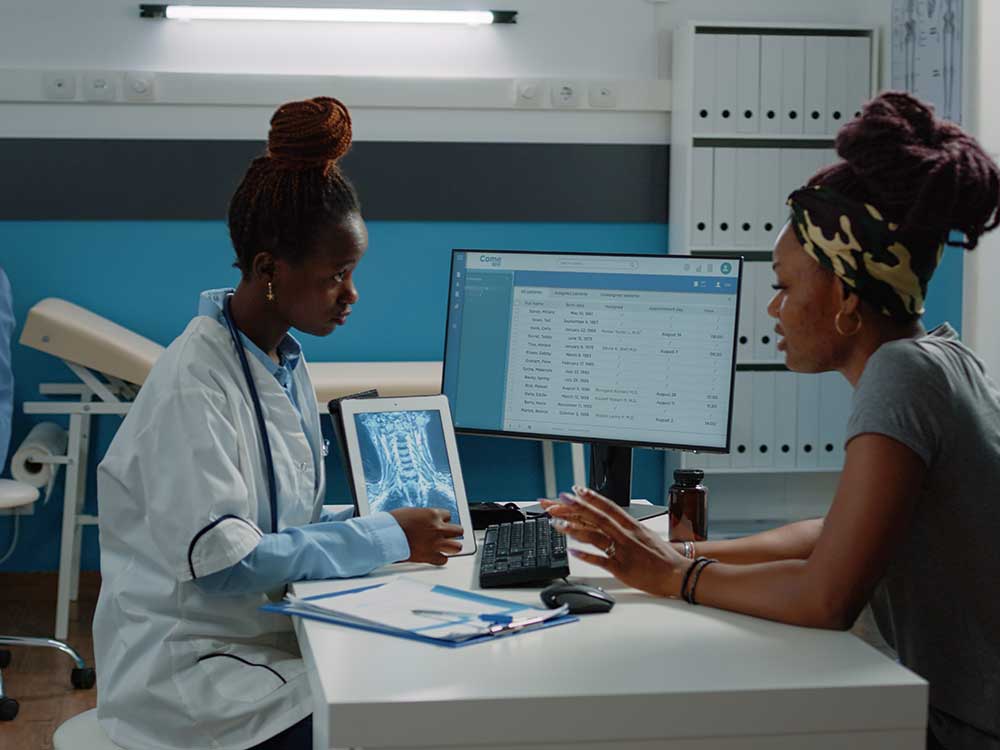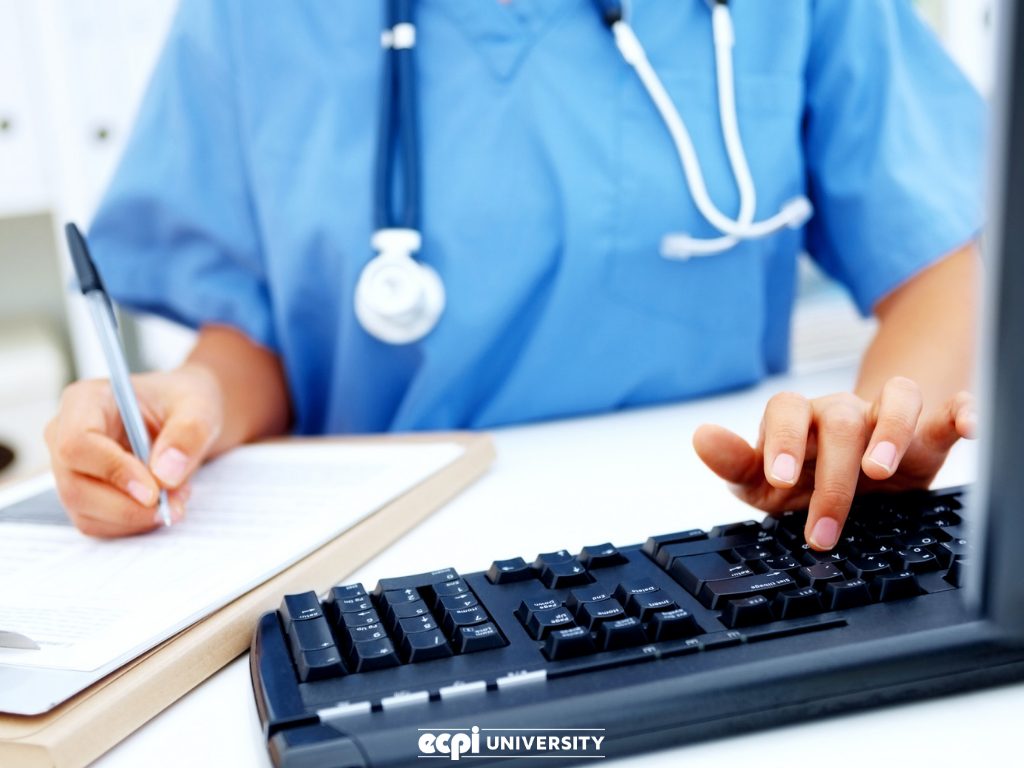Comprehending the Trick Functions and Responsibilities in Medical Administration
Comprehending the Trick Functions and Responsibilities in Medical Administration
Blog Article
Innovations in Medical Management: How Technology Is Reshaping Medical Care Administration
The landscape of healthcare monitoring is going through a profound makeover, driven by technological improvements in medical management. Electronic Health Records (EHR) have actually become the foundation of efficient person data monitoring, while telemedicine bridges distances, making medical care available to also the most remote areas. Man-made knowledge is not just an advanced concept yet a present-day device that individualizes client treatment and improves management tasks. As these technologies take facility phase, a critical concern arises: how will these innovations further redefine the health care experience for both providers and clients in the coming years?
Development of Electronic Health And Wellness Records
Over the previous couple of years, the advancement of digital wellness documents (EHRs) has actually significantly transformed the landscape of clinical management. Developed to digitize patient documents, EHRs have actually increased past their initial scope to become important tools in streamlining healthcare processes, enhancing person care, and enhancing administrative performances. The transition from paper-based systems to EHRs has reduced redundancies, decreased mistakes, and assisted in smooth info sharing throughout various doctor, therefore making it possible for extensive and coordinated patient care.
EHRs have presented a paradigm change in health care management by incorporating professional, administrative, and economic information, therefore enabling for more informed decision-making. The availability of real-time individual information encourages medical care specialists to make timely diagnostic and treatment choices, further boosting person outcomes. EHRs support the implementation of evidence-based techniques by supplying accessibility to the most current clinical study and therapy guidelines straight within the professional process.
The federal motivations and guidelines have actually sped up EHR fostering, making certain compliance with requirements that secure client privacy and information protection. As the health care market remains to embrace electronic transformation, EHRs stay at the center of advancement, driving efficiency and boosting the general top quality of medical care shipment.
Developments in Telemedicine
Telemedicine has swiftly advanced recently, fundamentally modifying the means medical care services are supplied. This change is greatly connected to technical developments that have increased accessibility to clinical care, particularly for individuals in remote or underserved locations. Telemedicine systems promote real-time examinations in between people and doctor, thereby reducing the demand for in-person visits and substantially reducing wait times.
The combination of video clip conferencing, mobile health and wellness applications, and remote monitoring tools has actually boosted the scope of telemedicine. People can currently take care of chronic conditions with continuous tracking, receive timely consultations, and accessibility professional care without geographical restrictions. This change has not only enhanced person satisfaction however has actually likewise maximized healthcare process and resource allowance.
In addition, telemedicine has played an essential role in public wellness, specifically throughout pandemics, by minimizing the risk of contagious illness transmission. Governing developments have actually additionally sustained telemedicine's proliferation, with several nations changing plans to allow broader insurance protection for online gos to.
Despite challenges such as digital proficiency and data safety and security, the continuous development of telemedicine promises to maintain its trajectory as a foundation of modern-day health care management, supplying a more easily accessible and reliable healthcare shipment model.
Expert System in Medical Care
Building on the technical developments seen in telemedicine, expert system (AI) is rapidly coming to be a transformative pressure in medical care management. AI modern technologies supply considerable renovations in efficiency, precision, and decision-making capacities. Among the most compelling applications of AI in healthcare is predictive analytics, which makes it possible for medical care managers to anticipate individual needs, simplify source appropriation, and boost client this contact form results. By assessing big datasets, AI formulas can recognize patterns and anticipate possible health and wellness crises, allowing positive intervention.

One more noteworthy application is in tailored medication, where AI assists in customizing therapies to private client accounts by assessing genetic, lifestyle, and environmental elements (medical administration). As AI remains to advance, its combination right into medical care check these guys out management promises to optimize procedures, minimize prices, and inevitably boost the quality of care offered
Enhancing Data Safety Steps
In the electronic age, safeguarding individual details has become a vital concern in clinical administration. As health care organizations progressively rely on digital systems for managing client information, the requirement for durable information safety and security measures has grown significantly. Information breaches not only endanger client privacy but also lead to significant economic losses and damage to institutional online reputations. The combination of advanced security methods is critical.
Medical care organizations are applying multi-layered safety and security frameworks to mitigate risks. Encryption innovations guarantee that delicate information continues to be inaccessible to unapproved individuals, both throughout transmission and storage space. The fostering of blockchain innovation presents a promising avenue for improving information honesty and traceability, supplying an immutable document of all transactions.

Training staff on cybersecurity finest methods is similarly crucial. Understanding programs equip medical care employees with try these out the knowledge to identify and report possible dangers, such as phishing attempts. By prioritizing data security, clinical administrations can secure patient details and keep count on.
Improving Patient Communication Solution
While robust information protection actions are essential in shielding person details, just as vital is the enhancement of patient interaction systems to make sure effective healthcare delivery. In the evolving landscape of healthcare administration, technical innovations are playing a pivotal role in transforming how doctor communicate with patients. Efficient interaction systems not just enhance individual satisfaction but also enhance scientific results by making sure prompt and accurate details exchange.
Among the significant advancements in this field is the assimilation of digital health records (EHR) with person sites. This integration enables clients to access their medical details safely, schedule appointments, and connect with health care companies efficiently. Furthermore, using telemedicine systems has expanded access to healthcare services, specifically for those in remote areas or with wheelchair difficulties. These systems assist in real-time examinations, decreasing the need for physical check outs and making it possible for continual treatment administration.
In addition, synthetic intelligence-powered chatbots are being significantly employed to provide instantaneous feedbacks to patient queries, supplying a seamless communication experience. By leveraging these technological developments, healthcare companies can cultivate more personalized patient communications, inevitably bring about boosted client interaction and adherence to therapy strategies.
Conclusion
Telemedicine boosts health care accessibility for remote populations, while synthetic knowledge automates tasks and customizes client involvement. Collectively, these improvements drive performance, lower expenses, and raise the quality of health care delivery, improving organizational operations in the medical care market.
Report this page